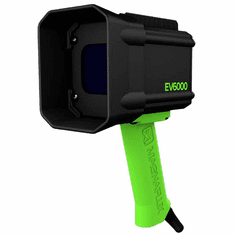-

MPI Accessories
Magnaflux offers a quality line of accessory items used with NDT magnetic...
-

MPI Equipment
Magnaflux magnetic particle inspection (MPI) testing equipment is designed to be fast,...
-

MPI Yokes and Yoke Kits
Magnaflux magnetic particle inspection (MPI) testing yokes are designed to be fast and...
-

MPI Materials
Improve your magnetic particle inspection with Magnaflux fluorescent powders, visible and colored...
-

UV LED Lamps
Magnaflux® UV Black Lights and Accessories are built to help maximize the...
Magnaflux® certified fluorescent and visible magnetic particle inspection materials offer NDT professionals superior detection capabilities in the identification of surface and slightly subsurface discontinuities in ferrous materials under daylight and black light conditions. Magnaflux Magnaglo® fluorescent and Magnavis® visible magnetic particle testing materials are two of the industrys most widely used and trusted NDT product lines. Their superior, finely controlled particles deliver maximum sensitivity to produce vivid indications that are unmatched in their detection of surface and slightly subsurface discontinuities across a range of ferrous materials. Backed by more than 80 years of magnetic particle experience and an expansive line-up of accessories and equipment, Magnaglo® and Magnavis® products are designed to support your NDT inspection process both in the field and in the shop with the level of performance that only Magnaflux® can provide. Magnetic Particle Inspection (MPI) is a non-destructive testing (NDT) method used to detect surface and near-surface defects in ferromagnetic materials. Ferromagnetic materials are those that can be magnetized, such as iron, steel, nickel, and some alloys. In the MPI process, the material to be inspected is magnetized, either by applying a direct current or by using an electromagnetic yoke. When a magnetic field is applied, it creates lines of magnetic flux within the material. If there is a surface or near-surface defect, such as a crack, void, or inclusion, the magnetic field lines will distort and "leak" out of the material at the location of the defect. To visualize these magnetic field distortions and locate the defects, magnetic particles (typically iron or iron oxide-based particles) are applied to the surface of the material. These particles are either suspended in a liquid (wet method) or mixed with a dry powder and applied as a dust (dry method). The particles are attracted to the areas of magnetic flux leakage, forming visible indications that highlight the presence of defects. The inspector can then examine the surface of the material and look for the patterns of accumulated particles, indicating the presence of defects. The method is particularly effective for detecting defects like cracks, surface porosity, laps, seams, and other discontinuities that are open to the surface. MPI is widely used in various industries, including manufacturing, aerospace, automotive, oil and gas, and construction, to inspect critical components, welds, and structures for safety and quality assurance purposes. It is a reliable and cost-effective method for detecting flaws in ferromagnetic materials without causing any damage to the tested parts.





